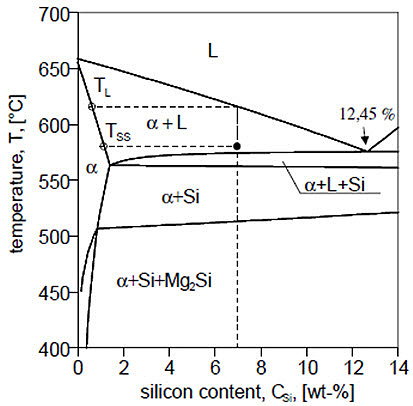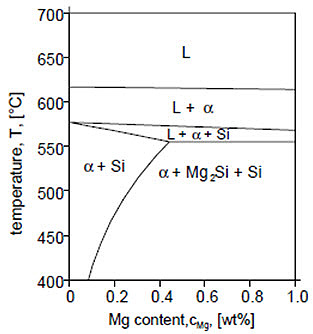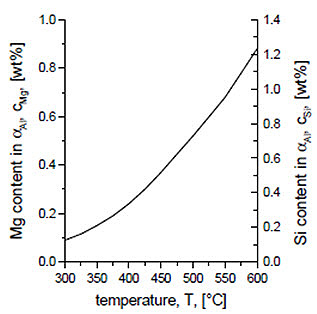AlMgSi Alloys: Advanced Aluminum Alloys for Automotive Applications
Abstract
AlMgSi alloys represent a critical class of aluminum alloys driving lightweight automotive design through their exceptional combination of strength, castability, and corrosion resistance. These aluminum-magnesium-silicon alloys have gained prominence in the automotive industry as viable substitutes for heavier metals, contributing to reduced fuel consumption and CO2 emissions. The alloys' performance characteristics depend heavily on thermo-mechanical processing routes, including rolling schedules, annealing temperatures, and heat treatment conditions. Silicon additions provide excellent casting properties and wear resistance, while magnesium enables age hardening through Mg2Si precipitation. Despite their advantages, AlMgSi cast components face limitations from solidification-related defects that affect mechanical properties and fatigue behavior.
Introduction to AlMgSi Alloys in Modern Manufacturing
The automotive industry's relentless pursuit of lighter, stronger materials has catalyzed the development and widespread adoption of aluminum alloys with highly specific property characteristics. Among these advanced materials, AlMgSi alloys have emerged as particularly valuable due to their exceptional castability, intrinsic hardness, and superior corrosion resistance. These aluminum-magnesium-silicon alloys are increasingly replacing heavier metals in automotive applications, driven by both economic pressures and environmental regulations demanding reduced fuel consumption and lower CO2 emissions.
The European automotive sector exemplifies this trend, having substantially increased the average usage of aluminum alloys in passenger vehicles over recent decades. This shift represents not merely a material substitution but a fundamental reimagining of automotive design priorities that balance performance, efficiency, and environmental responsibility.
Performance Optimization Through Thermo-Mechanical Processing
The superior performance characteristics of AlMgSi alloys depend critically on carefully designed thermo-mechanical processing routes. Formability properties are directly influenced by rolling schedules and annealing temperatures, while final strength characteristics result from precisely controlled annealing and quenching conditions. These primary treatments are further enhanced through successive pre-aging and paint baking treatments that optimize the alloy's mechanical properties for specific automotive applications.
This processing complexity underscores the sophisticated engineering required to maximize the potential of aluminum alloys in demanding automotive environments where performance consistency and reliability are paramount.
Silicon's Role in Aluminum Alloy Enhancement
Among commercial aluminum casting alloys, those incorporating silicon as the major alloying element hold the greatest importance, primarily due to their outstanding casting characteristics. Silicon additions to pure aluminum impart remarkable properties including high fluidity, excellent feeding characteristics, minimal shrinkage, and superior hot cracking resistance. These properties make silicon-enhanced aluminum alloys particularly suitable for complex automotive casting applications.
The high strength-to-weight ratio represents one of the most compelling characteristics of these alloys. With silicon's density of 2.3 g/cm³ compared to aluminum's 2.7 g/cm³, silicon represents one of the few alloying elements that can be added to aluminum without compromising its fundamental weight advantage. This characteristic proves especially valuable in automotive applications where weight reduction directly translates to improved fuel efficiency and performance.
Aluminum-silicon alloys without copper additions are specifically utilized when applications demand both excellent castability and superior corrosion resistance. In these formulations, magnesium can effectively substitute for copper, providing necessary strengthening mechanisms while maintaining corrosion resistance properties.
Magnesium-Silicon Interactions and Strengthening Mechanisms
Magnesium and silicon combine to form the intermetallic hardening phase Mg2Si, which precipitates within the α-aluminum matrix and significantly increases yield strength. This precipitation hardening mechanism represents the fundamental strengthening approach in AlMgSi alloys and enables their exceptional mechanical properties.

Figure 1: Pseudo-binary section of the system AlSiMg0.3, illustrating the temperature interval of solidification (approximately 60°C) and the semi-solid forming temperature TSS at ~580°C with liquid and solid fractions of approximately 50%
The relationship between magnesium content and yield strength demonstrates that increased alloyed magnesium directly correlates with enhanced yield strength. However, this relationship has practical limitations. The maximum magnesium amount that can be dissolved in α-aluminum with simultaneous presence of silicon and Mg2Si ranges between 0.45 wt% and 0.75 wt% at 555°C, depending on the specific alloy composition.

Figure 2: Pseudo-binary section of the system AlSi7Mg, showing the relationship between temperature and magnesium solubility

Figure 3: Solubility diagram showing Mg and Si solubility in αAl with concurrent presence of Mg2Si and Si in equilibrium
Magnesium that cannot be dissolved in the matrix becomes available for forming undesired intermetallic compounds, which can negatively impact alloy properties and performance.
Iron Contamination and Intermetallic Compound Formation
Iron represents the most detrimental impurity in AlSiMg alloys, forming various intermetallic compounds with silicon and magnesium including α(Fe2SiAl8), β(FeSiAl5), and π(FeMg3Si6Al8). These compounds significantly influence mechanical properties and overall alloy performance.
The formation of plate-shaped β compounds particularly reduces mechanical properties, especially ductility and fracture toughness. The size and volume fraction of these β plates depend strongly on iron content, solidification rate, and modification level. Understanding and controlling these factors is crucial for optimizing alloy performance in automotive applications.
The β-phase to π-phase transformation depends on magnesium content and follows a specific sequence. When β-FeSiAl5 represents the primary iron-bearing phase, all magnesium remains in solid solution. Additional magnesium additions initially lead to β-AlFeSi transformation into π-FeMg3Si6Al8, while magnesium concentration in solid solution remains constant.
After complete β-FeSiAl5 transformation, further magnesium additions increase magnesium in solid solution, with π-FeMg3Si6Al8 becoming the sole iron-bearing phase. Research indicates that low magnesium alloys (0.3-0.4%) experience π-phase to β-phase transformation, while higher magnesium content alloys (0.7wt%) exhibit more dominant larger π-phase particles.
The sharp edges of β-FeSiAl5 plates act as stress concentrators with detrimental effects on ductility. Conversely, the π-FeMg3Si6Al8 phase has less negative impact on ductility because larger magnesium amounts are consumed in forming these constituents, reducing magnesium availability for Mg2Si precipitate formation and resulting in matrix softening.
Automotive Applications and Industry Impact
The exceptional combination of properties in aluminum-silicon-magnesium alloys has resulted in their dominant position in the casting industry, with 90% of all shaped aluminum castings utilizing Al-Si based alloys. These alloys successfully combine superior casting properties with acceptable mechanical properties, making them ideal for demanding automotive applications.
Silicon's contribution to aluminum enhancement occurs through multiple mechanisms. Silicon significantly improves aluminum fluidity during casting processes, enabling the production of complex geometries required in modern automotive components. Additionally, silicon particles provide hardness and enhance wear resistance, crucial characteristics for engine components subjected to continuous mechanical stress.
The addition of magnesium transforms Al-Si alloys into age-hardenable materials through Mg2Si particle precipitation. This age-hardening capability allows manufacturers to optimize mechanical properties through controlled heat treatment processes, providing flexibility in meeting specific performance requirements.
The combination of excellent castability, superior corrosion resistance, and high strength-to-weight ratio enhances both performance and fuel economy, making cast Al-Si-Mg alloys ideal candidate materials for various automotive applications. These applications include critical components such as engine blocks and cylinder heads, where performance reliability and weight reduction are essential.
Limitations and Manufacturing Challenges
Despite their numerous advantages, Al-Si-Mg cast components face significant limitations primarily related to solidification conditions' influence on final microstructure. The solidification process inevitably introduces various defects including oxide films, shrinkage porosity, and gas porosity. These defects significantly affect mechanical properties and particularly impact fatigue behavior, which is critical for automotive applications subjected to cyclic loading conditions.
Understanding and mitigating these solidification-related challenges represents an ongoing area of research and development in aluminum alloy technology. Advanced casting techniques, improved process control, and innovative alloy modifications continue to address these limitations while maintaining the fundamental advantages that make AlMgSi alloys attractive for automotive applications.
The successful implementation of these alloys in automotive manufacturing requires careful balance between optimizing casting processes, controlling microstructural development, and achieving required mechanical properties while minimizing defect formation.
Доступ к точным свойствам алюминиевых сплавов!
Total Materia Horizon содержит информацию о более чем 30 000 алюминиевых сплавах: состав, механические, физические, электрические свойства, нелинейные характеристики и многое другое.

Получите бесплатный тестовый аккаунт в Total Materia Horizon и присоединяйтесь к сообществу из более чем 500 000 пользователей из 120+ стран.